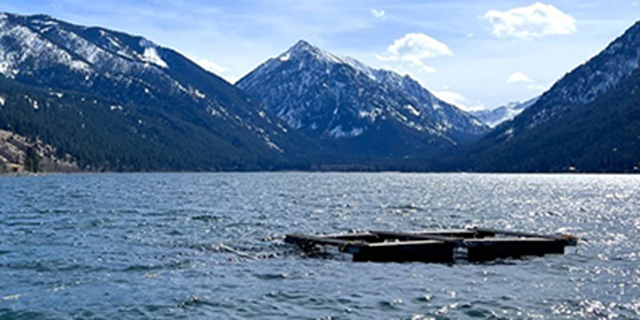Steer clear of fish research gear at Wallowa Lake
Published 10:00 am Thursday, March 27, 2025

- A Merwin net floats in March 2025 on Wallowa Lake. The Oregon Department of Fish and Wildlife is using Merwin nets and gill nets in the spring to conduct research on fish population trends in the lake, including what effects the predatory lake trout have on other fish. (Oregon Department of Fish and Wildlife/Contributed Photo)
Project looks at trends in fish populations with focus on effects of predatory lake trout
ENTERPRISE — The Oregon Department of Fish and Wildlife is asking anglers and recreationists to steer clear of nets on Wallowa Lake.
ODFW staff have set out large nets in the lake to monitor fish population trends and assess the effects of lake trout on other species. The nets will be in place for about four weeks for research purposes and are not part of a fish removal effort, ODFW announced in a press release Thursday, March 27.
“We’re working on trying to understand trends in fish populations in Wallowa Lake, and these nets will allow for long-term sampling efforts without injuring sensitive species like bull trout,” Kyle Bratcher, ODFW District fish biologist, said in the press release.
In addition to general monitoring of the fish, ODFW and the Nez Perce Tribe will be looking at the catch of lake trout, which are large, predatory fish native to the Great Lakes region of North America. They were introduced to Wallowa Lake in the 1960s and have since persisted. In some lakes in the Western United States, introduced lake trout have decimated other species present, which ODFW reported is a concern particularly for Wallowa Lake kokanee.
ODFW reported it has not yet found any evidence lake trout are negatively effecting other fish species in Wallowa Lake, but given the importance of species such as kokanee and the planned reintroduction of sockeye salmon, it is vital that state and tribal biologists gain a clearer picture of lake trout population dynamics.
ODFW has set up two temporary nets in Wallowa Lake. Both are large nets known as “Merwin” traps. They consist of a long panel of fine mesh netting leading into a series of funnels that trap fish swimming along the shore. The fish are unharmed in the large holding pen while awaiting release.
ODFW will be using the Merwin traps and gillnets to capture and survey fish.
“While gillnets are typically more harmful to the fish they catch, these nets are set strategically and are only fished for four to six hours to avoid excessive catch and injury of non-target fish,” according to ODFW.
Anglers likely won’t encounter gillnets because they will be set during the evenings and only deployed for a short duration. However, the Merwin traps will remain in place for three to four weeks. Anglers and boaters should not approach these nets, which will be marked with buoys or floating walkways.
Unlike streams that are shallow with discrete habitats where fish can be located, in large, deep lakes such as Wallowa Lake, fish are difficult to catch with methods such as electrofishing. Typically, researchers use nets to trap fish in these kinds of lakes.
By using these methods, biologists can gain insights into fish population interactions within Wallowa Lake to better manage them for conservation and recreational fisheries while limiting effects to sensitive species.
If you have any questions or see any unauthorized access to nets set in the lake, contact ODFW in Enterprise at 541-426-3279.





